-
Products
- Lab Instruments
-
Lab Meters and Probes
Calibration Standards Other Meters and Probes
- Chemistries, Reagents, and Standards
-
Online Analyzers
Ammonium Analysers Chlorine Analyzers
- CL17sc
- CL10sc Amperometric
- 9184 sc Amperometric
- Ultra Low Range CL17sc Colorimetric Chlorine Analyser
EZ Series Analysers- Iron
- Aluminium
- Manganese
- Phosphate
- Chloride
- Cyanide
- Fluoride
- Sulphate
- Sulphide
- Arsenic
- Chromium
- Copper
- Nickel
- Zinc
- Ammonium
- Total Nitrogen
- Total Phosphorus
- Phenol
- Volatile Fatty Acids
- Alkalinity
- ATP
- Hardness
- Toxicity
- Sample Preconditioning
- Boron
- Colour
- Nitrate
- Nitrite
- Silica
- Hydrogen Peroxide
- EZ Series Reagents
- EZ Series Accessories
- EZ sc Series Inorganics
- EZ sc Series Metals
- EZ sc Series Nutrients
-
Online Sensors and Controllers
Digital Controllers (Transmitters) Controllers (Analog)
- SC4500
- Orbisphere 410/510 Carbon Dioxide
- Orbisphere 410/510 Oxygen
- Orbisphere 410/510 Ozone
- Pro Series
pH & ORP Sensors- 1200-S pH
- 12mm pH/ORP
- 8362 sc High Purity
- Combination pH/ORP
- Differential pH
- Digital Differential ORP
- Digital Differential pH
- LCP ORP
- LCP pH
Dissolved Oxygen Sensors- 2582sc
- 5500 Clark DO
- 9582 sc
- LDO 2 sc
- Orbisphere 311xx
- Orbisphere GA2x00
- Orbisphere K1X00
- Orbisphere M1100
- Orbisphere Oxygen ppb
Conductivity Sensors- 3400 Analogue Contacting
- 3400 Digital Contacting
- 3700 Analogue Inductive
- 3700 Digital Inductive
- 3798 sc Electrodeless
- 9523 Cation Conductivity
- 9525 DCCP System
- Samplers
- Multiparameter Online Panels
- Test Kits & Strips
-
Microbiology
Accessories and Chemicals Dehydrated MediaInstruments KitsLabware
- Automated Lab Systems
-
Lab Equipment and Supply
Apparatus
- Brushes
- Clamps, Rings & Stands
- Crucibles
- Crucibles & Casseroles
- Dispensers & Droppers
- Grab Samplers
- Oil and Grease
- Other Apparatus
- Pipet Aids
- Pipettes
- Racks
- Stir Bars
- Tubing
- Weighing Accessories
General Lab Consumables Glassware/PlasticwareInstruments- Balances
- Hot Plates & Stirrers
- Microscopes
- Moisture Analysers
- Other Instruments
- Ovens & Incubators
- Thermometers
- Timers
- Vacuum Pump
- Industrial UV
- Flow and Collections
- Electrochemistry
- Parameters
- Industries
- Support
- Service
- e-Shop
Hach India
Choose your country or region:
Europe
Americas
Asia - Australasia
- Australia
- Mainland China
- India
- Indonesia
- Japan
- Malaysia
- New Zealand
- Philippines
- Singapore
- South Korea
- Thailand (Thai)
- Taiwan
- Vietnam
Middle East - Africa
Promotions INQUIRY: +91 9916040249
Hardness (Total, Ca & Mg)
Why Measure Hardness?
In general, hard water forms solid deposits comprised of mainly calcium and magnesium salts and can damage equipment, while soft water may be corrosive and therefore, it is important measuring and knowing levels of hardness in your process water to maintain the delicate balance between scaling and corrosivity.
While some hardness may be acceptable in certain water quality applications, others require zero hardness to prevent scaling and damage to equipment. Therefore, water softening by either precipitation or ion exchange is often necessary to remove hardness. To optimize these processes, it is sometimes important to monitor calcium and magnesium levels separately, along with total hardness.
Additionally, magnesium can interfere with other water quality tests such as nitrogen, ammonia-salicylate methods. Visit these related parameter pages to learn more about ammonia and nitrogen.
At Hach®, find the testing equipment, resources, training, and software you need to correctly monitor and manage water hardness in your specific application.
Featured Products to Measure Hardness
The Hach SP510 Hardness Monitor continuously monitors water systems to provide an alarm when total hardness exceeds a pre-set limit.
Shop NowThe EZ Series Online Analyzers offer multiple options to monitor total hardness and calcium hardness in water.
Shop NowSL1000 - PPA Portable Parallel Analyzer- Portable Colorimeter with USB
The Hach SL1000 Portable Parallel Analyzer (PPA) performs the same tests with less than half the manual steps.
Shop NowHach has been innovating with spectrophotometry for over 70 years and offers many of the leading spectrophotometers in the water analysis market.
Shop NowHach digital titrators use a high-precision dispensation device and replaceable titrant cartridges for highly accurate results in the field or lab.
Shop NowAT1000 Titration Bundle, Total Hardness, Ca & Mg (ISE)
Everything you need for total hardness (Ca & Mg) titration in one package.
Shop NowAT1000 Titration Bundle, Total Hardness (Color)
Everything you need for total hardness (color) titration in one package.
Shop NowHigh-quality Hach chemistry on an easy-to-use test strip. Simply dip the strip in sample and compare with colors printed on the bottle to find a reading. Test strips are accurate, portable and cost efficient.
Shop NowWhat is Hardness?
Hardness is a measure of the soap consuming capacity of water. The term comes from an expression of how difficult or "hard" it is to wash clothes with the water. When soap is mixed with hard water, the minerals combine with the soap and form a solid precipitate. This decreases the cleaning efficiency of the soap and forms soap scum. As more soap is added, solids continue to form until the minerals are depleted. When the minerals are no longer available, the soap forms a lather and works as a cleaning agent.
Water Hardness is Generally the Concentration of Calcium and Magnesium Ions in Water
The minerals that precipitate with soap are represented by cations of polyvalent metals such as calcium, magnesium, iron, manganese and zinc. The concentration of calcium and magnesium in natural waters generally far exceeds that of any other polyvalent cation. Therefore, hardness is generally considered to be the concentration of calcium and magnesium ions in water.
Carbonate and Non-Carbonate Hardness
Hardness can be classified as carbonate and non-carbonate hardness. Carbonate hardness refers to calcium and magnesium bicarbonate. Sometimes it is referred to as temporary hardness because it can be removed or lowered by boiling. When such bicarbonates are heated, they precipitate in solid carbonate forms. This is the primary cause of scale formation in water heaters and boilers.
Non-carbonate hardness is caused primarily by calcium and magnesium nitrates, chlorides and sulfates. Non-carbonate hardness is sometimes referred to as permanent hardness.
The Relationship Between Alkalinity and Water Hardness
The amount of carbonate vs. non-carbonate hardness can be found by measuring alkalinity. If the alkalinity is equal to or greater than the hardness, all of the hardness is carbonate. Any excess hardness is non-carbonate hardness.
In the US, hardness is typically reported in mg/L as CaCO 3 or gpg (grain per gallon) as CaCO 3. Because alkalinity is also reported as CaCO 3, the results of the two tests can be compared directly. Total hardness is the sum of all carbonate and non-carbonate salts of calcium and magnesium present in the water.
Which Processes Require Hardness Monitoring?
Drinking Water Industry
Excessive hardness of finished water released in the distribution system may cause scaling and if the water is too soft, it can cause corrosion of the pipes. Thus, leaching out lead and copper which may lead to violation of the lead and copper rule (LCR).
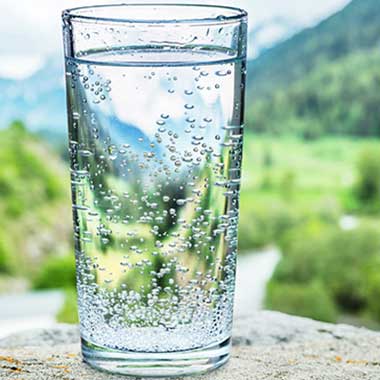
Wastewater
During sludge digestion, monitor hardness to optimize efficiency. Soap biodegradation and oxygen uptake by activated sludge are affected by elevated hardness concentrations.
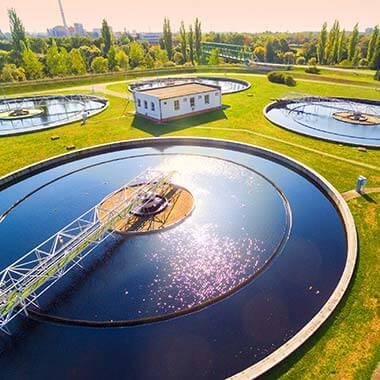
Pool and Spa Water Testing
Water that is too "hard" can cause scaling, deposits of calcium carbonate. "Soft water" will corrode pipes and surfaces inside the pool, which contain calcium (like pool plaster) and other minerals.

Power Industry
Water hardness can cause scaling in water heaters and boiler tubes. Therefore, it is crucial to monitor and remove all salts, especially those causing hardness.
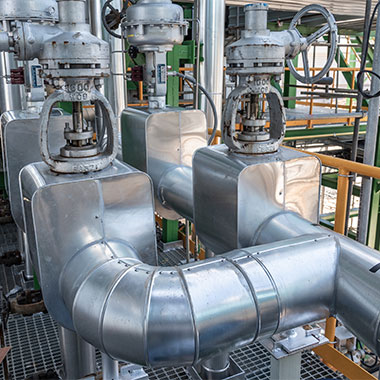
Chemical Manufacturing Industry
Monitor incoming water for mineral content in order to properly adjust product water quality and sensory factors. Monitor the performance of water softening systems to avoid scaling and assess the load on reverse osmosis systems. Continuous monitoring of boiler/cooling water (leaving the condenser) helps to detect minute and fluctuating levels of hardness that can cause scaling in piping, condensers and dryers over time. This allows operators to manage hardness levels, preventing damage and lost revenue due to downtime.
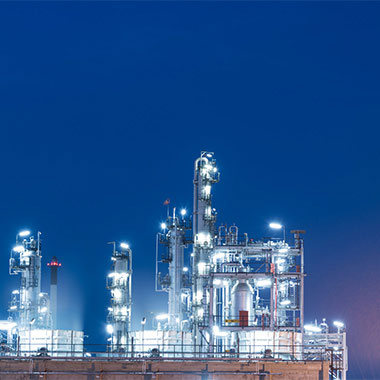
Food Manufacturing Industry
Monitor and manage total hardness to optimize boiler and cooling tower feed water. This minimizes chemical usage, prevents corrosion/scaling and protects plant equipment.
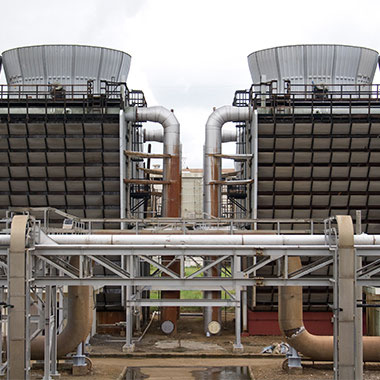
Mining Industry
Water is essential to metal and mining operations, but the industry is seldom the only consumer of water near extraction or processing sites. By monitoring and treating source water, mining companies not only ensure their own quality standards are met, but they also can contribute to the health of communities, agricultural resources and wildlife ecosystems in the process. Whether obtained from groundwater or precipitation, oceans or lakes, rivers or streams, through commercial or municipal supply—the water utilized in mining is interconnected with the water cycle of the entire region.

Pulp and Paper Industry
Monitor total hardness in water supplies to guard against in-plant corrosion and/or scaling, as well as effects of high hardness on the product quality.
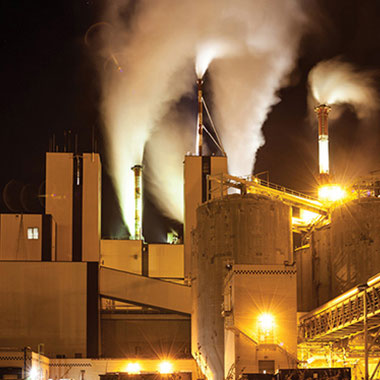
Beverage Industry
Hardness of the water used to make beverages may affect their organoleptic properties.
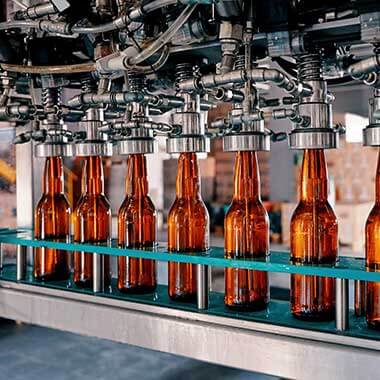
How is Water Hardness Measured?


Titration
Hardness is commonly measured by colorimetric titration with an EDTA solution. A titration involves adding indicator and then titrant solution in small increments to a water sample until the sample changes color. You can titrate a sample for total hardness using a burette or use a water hardness test kit. You can also measure calcium hardness separately from magnesium hardness by adjusting the pH and using different indicators.
Drop Count Test Kits
This hardness test uses a dropper to add the EDTA solution to the sample and the drop counts are proportional to the water hardness. Total hardness test kit model HA-71A, uses ManVer ® indicator and works best for natural water samples, especially when iron or manganese is present, or when alkalinity is high. Test kit models 5-B, 5-EP, and 5-EP/MG-L, which use UniVer ® reagent, work best for industrial samples that may have high concentrations of metals, such as copper. Other test kits are available for measuring calcium and magnesium hardness separately.
Digital Titrator
Kits using the digital titrator can measure hardness more accurately than drop count titration kits. This is because the digital titrator dispenses the EDTA solution in very small increments with higher precision. Hardness test kits with digital titrator use the ManVer ® indicator.
Hardness (Total & Ca), Model HAC-DT

Test Strips
When the water hardness test strip is dipped in a water sample, a color develops on the strip and the strip is matched to a chart. The chart shows colors for concentrations of 0, 25, 50, 120, 250, and 425 ppm, or 1, 1.5, 3.7, 15, and 25 gpg. Use the test strips when a general range for hardness is sufficient. Test strips should not be used when an exact hardness value is required.
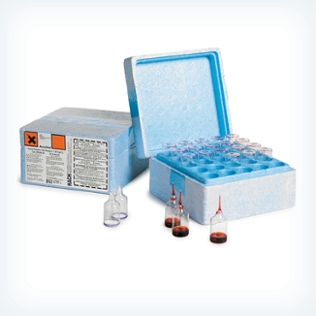
Colorimetry or Spectrophotometry
Use a colorimeter or a spectrophotometer when you need to measure hardness of extremely soft water, where the concentration is expected to be less than 4 mg/L as CaCO 3 (calmagite method).
Benchtop/Portable:
Use a spectrophotometer when you need to measure ultra-low hardness in water, where the concentration is expected to be less than 1 mg/L as CaCO 3 (chlorophosphonazo method).
Benchtop:
Chlorophosphonazo Reagent Set, Bulk Solution
Chlorophosphonazo Reagent Set, Solution Pillows
Use a spectrophotometer to measure higher ranges of total, Ca and Mg hardness.
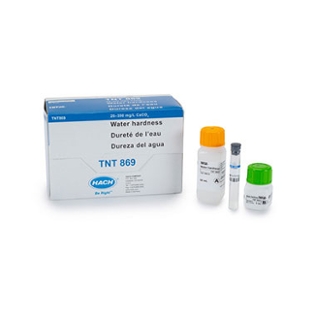
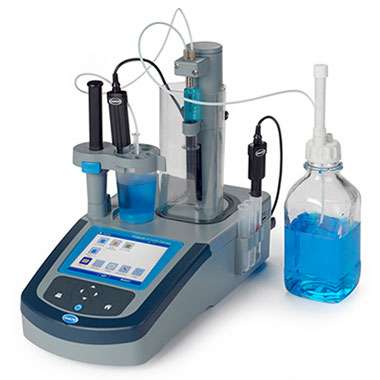
Electrode
Calcium can also be measured using an ion-selective electrode, such as the Radiometer ISE25Ca or the 9660C Calcium Ion Selective Electrode (ISE). An electrode is the best method to use when color or turbidity in the sample interferes with colorimetric titration or spectrophotometric methods.
Benchtop:
AT1000 Titration Application Pack Ca & Mg Hardness
AT1000 Titration Application Pack for pH/Alkalinity & Hardness

Online Analysis
Online analyzers allow for continuous hardness monitoring. These instruments can activate alarms or control chemical feed pumps when the hardness concentration reaches a selected level.
Water Softening
To reduce undesirable hardness, water must be softened. Softening methods typically fall into two main categories:
Ion Exchange Softening Process
This process exchanges cations causing hardness with non-hardness-causing cations, typically sodium, using either natural or synthetic ion-exchanging matrix, e.g. resin. For example, naturally occurring matrices include greensands and zeolites. Different ion-exchange resins (or matrices) possess varying properties. Synthetic materials tend to have a higher exchange capacity, so they are better for removing higher levels of hardness. Resins using hydrogen as the cation are commonly referred to as demineralizers and usually are comprised of both cation and anion-exchange resins to maintain neutral pH. For health reasons, it is important to note that sodium-based resin will increase the sodium levels in the treated water. This may also provide interference to some ULR hardness methods.
Once the exchange capacity of a resin has been exhausted, most can be regenerated so it is important to monitor effluent hardness to determine when the column needs regeneration. In this two-step process, first the unit is flushed to remove sediment, and then a brine solution is circulated through the resin at certain conditions to replace the accumulated calcium and magnesium ions with the cation used for softening originally.
Advantages
- The method does not appreciably affect other properties of the water, such as pH.
- Hardness causing cations other than magnesium and calcium are also removed by this process.
- This process can reduce hardness to near zero.
Disadvantages
- High levels of iron or manganese in the water can foul the ion exchange resin.
- Sodium resins can elevate sodium levels in finished water and cause interference to some ULR methods for hardness monitoring.
- High solids can foul resin beds, causing additional expense.
Precipitation Softening Process
Precipitation is typically accomplished with the lime-soda process. When lime is added to hard water, it causes a reaction with the carbonate hardness present producing solids that then must be removed from the water. Lime and soda ash can be used together to remove both carbonate and non-carbonate hardness. Compared with calcium precipitation, magnesium precipitation requires twice the amount of chemical additive and generates twice the amount of sludge that must be removed. Excess carbon dioxide must be removed prior to softening because it can impede lime precipitation.
Advantages
- This process may remove excess iron and fluoride.
- Due to the high pH, bacteria and viruses may be removed by this process.
- With proper control, corrosivity and scale formation can be controlled with this method.
Disadvantages
- It produces a considerable amount of sludge that requires disposal.
- Operation and chemical costs are high.
- The addition of soda ash may affect sodium levels in the water.
- Recarbonation, or the reintroduction of carbon dioxide, must be performed after softening to lower pH, to remove excess lime and to encourage the precipitation of any remaining calcium carbonate.
- This process cannot reduce hardness to zero.
- This process requires a high degree of operator skills to control.
Frequently Asked Questions
What is the difference between hardness and alkalinity?
Hardness is the sum of the multivalent metal ions, specifically and prevalently calcium and magnesium in solution, whereas alkalinity is a measure of the solution’s ability to neutralize acids (sum of hydroxide, carbonate and bicarbonates). In natural water systems, calcium carbonate is usually present and responsible for different characteristics of the water. Both hardness and alkalinity are expressed as a concentration of CaCO 3 for convenience of reporting a single number to represent multiple chemicals and for ease in calculating a solution’s carbonate and non-carbonate hardness.
What concentration of hardness is considered hard or soft?
There is no universal agreement on what exact concentrations are considered hard or soft. The following information was taken from the U.S. Department of Interior and Water Quality Association (other organizations may use slightly different classifications):
|
Classification |
mg/L |
gpg (grain per gallon) |
|
Soft |
0 - 17 |
0 - 1 |
|
Slightly hard |
17 - 60 |
1 - 3.5 |
|
Moderately hard |
60 - 120 |
3.5 - 7.0 |
|
Hard |
120 - 180 |
7.0 - 10.5 |
|
Very Hard |
>180 |
>10.5 |
What is temporary vs. permanent hardness?
Temporary and permanent hardness are terms used to differentiate between hardness that can be removed by boiling the water (temporary) from hardness and hardness that cannot be removed by boiling (permanent). Temporary hardness is synonymous with carbonate hardness. Permanent hardness is synonymous with non-carbonate hardness.
How can carbonate and non-carbonate hardness be calculated?
Carbonate and non-carbonate hardness can be calculated if the total hardness and total alkalinity values are known:
|
Hardness and Alkalinity Relationship |
Noncarbonate Hardness, mg/l as CaCO 3 |
Carbonate Hardness, mg/l as CaCO 3 |
|
Total Hardness ≤ |
= Total Hardness |
0 |
|
Total Hardness ≥ |
= Total Alkalinity |
= Total Hardness - Total Alkalinity |



